Most people can relate to this situation. You come across a perfect place for a photo—the lighting is just right, the surroundings are beautiful, and your hair looks amazing. You decide to take a selfie, or you ask your friend to take your picture.
Then, you get home, excited about posting it, until you realize that something photobombed it. This could be a person passing by, an unwanted bird in a clear sky, or an ugly powerline.
We’re here to teach you how to remove an object from a picture using Photoshop so you can get that perfect shot.
Use the Spot Healing Brush
The Spot Healing Brush, which is under the Eyedropper, is the fastest and easiest tool you can use to remove an object from a photo. This method is best when there is a simple background, and the object is relatively small.
To start, right-click the layer, select Duplicate Layer, and press OK. This way, if you make a lot of changes and aren't happy with it, you can easily go back to the original. You can always undo and redo changes in Photoshop as well, but this way is safer.
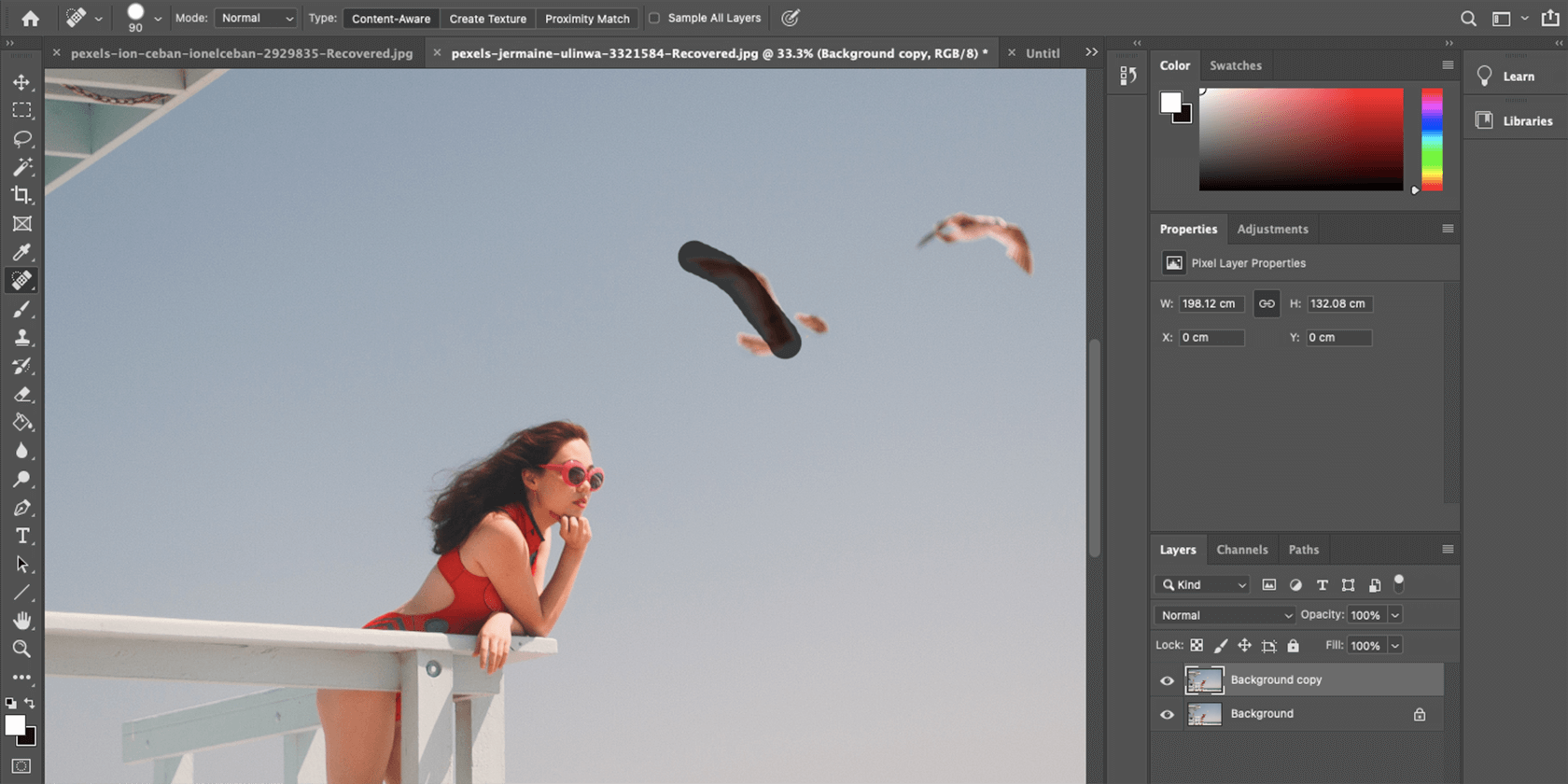
Then, pick the Spot Healing Brush. Use the [ ] keys to select your brush size, and paint over the unwanted object. Make sure to go over the entire thing, until you are happy with the results.
Use Content-Aware Fill to Delete Objects in Photoshop
Content-Aware Fill uses a similar method as the Spot-Healing Brush, but it's more accurate. The tool analyzes the pixels in the picture to approximate the best way to fill in the selected area.
As before, start with a new duplicated layer to make sure you don't mess up the original photo.
Select the element that you want to remove with the Quick Selection Tool. Use the [ ] keys to control the brush size. You can add areas to the selection with Shift + Click and remove unwanted selections with Alt + Click.
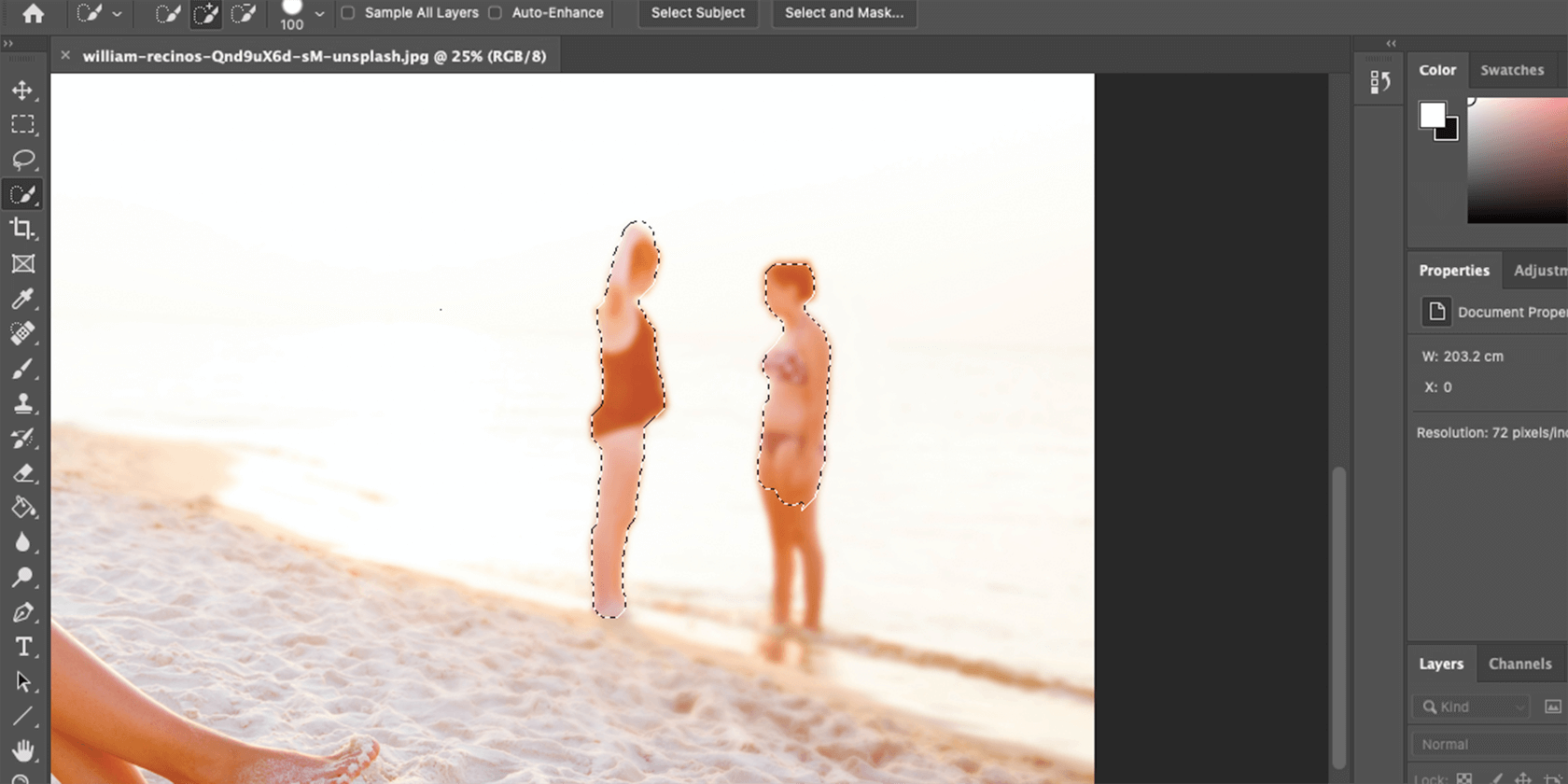
But for more complex shapes that are harder to differentiate from the background, use the Lasso Tool. It lets you trace freehand around the object. Hold Alt down if you want to remove something from the selection, and trace around it.
By holding Shift down, you can add to the selection. You don’t have to be that precise, but try to draw as close to the object as possible.
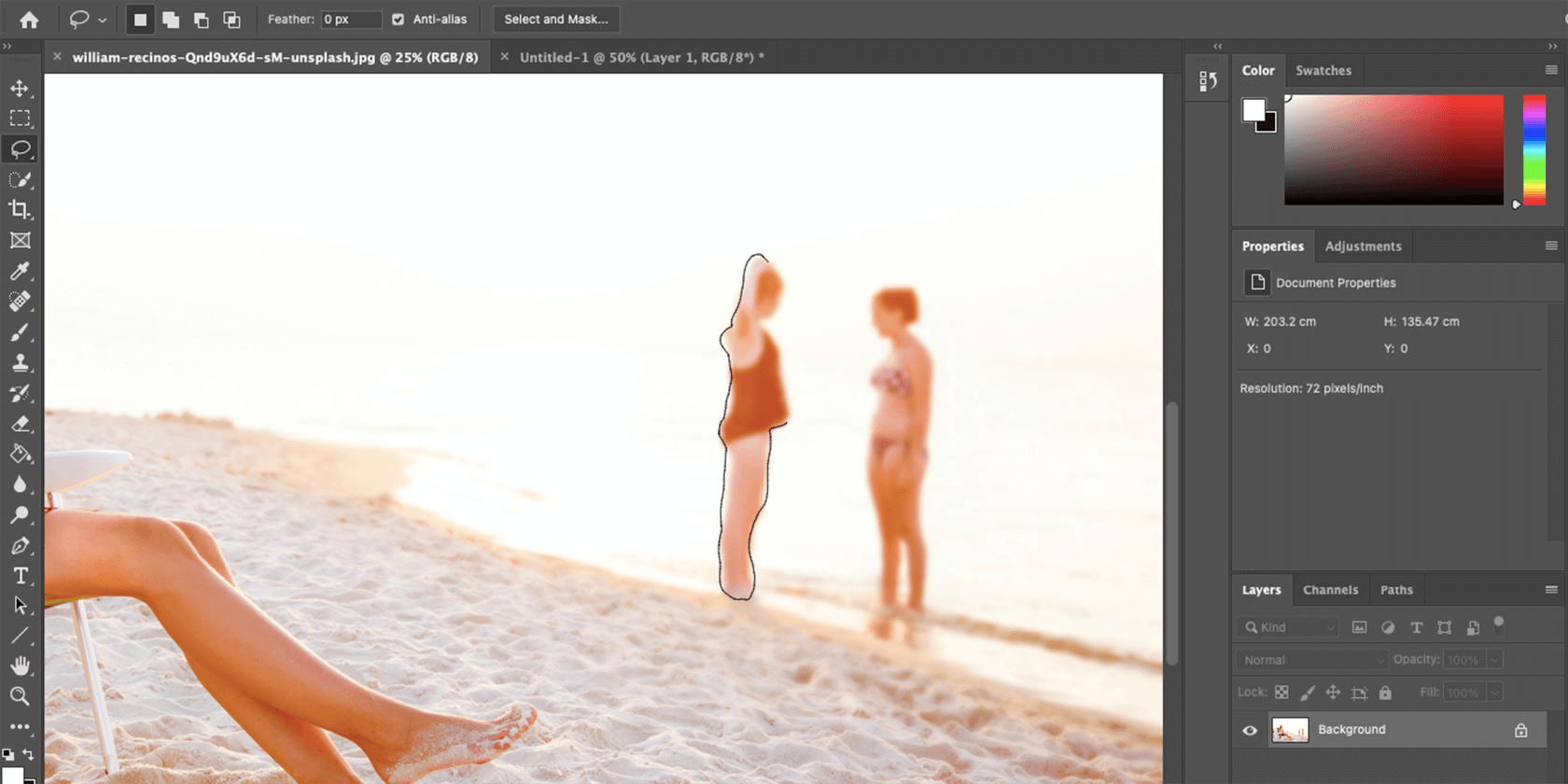
Once you've made your selection using one of the above methods, go to Edit in the menu bar, and select Content-Aware Fill. The preview inside that tool will show you how the image looks without the intruding object. If you’re satisfied with the results, click OK.
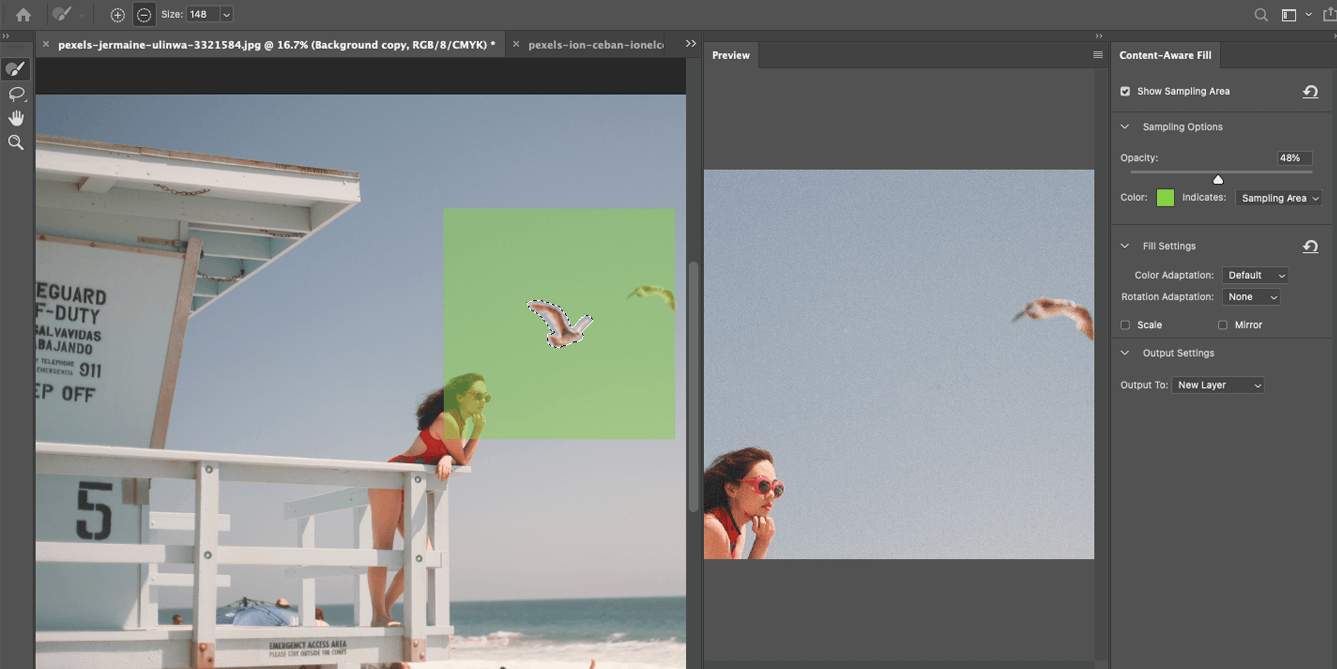
As shown above, since it’s a simple background, it blends in completely and the new fill is created in a new layer. This can be changed by selecting Output to: Current layer.
Sometimes, when the background is not that simple, the tool creates a layer that doesn’t match that well. This can be slightly tweaked.
Use the Sampling Brush Tool within Content-Aware Fill to deselect the area that doesn’t match (make sure you mark the -). Everything in green is considered in the sampling, so you can add or subtract to create a more even blend.
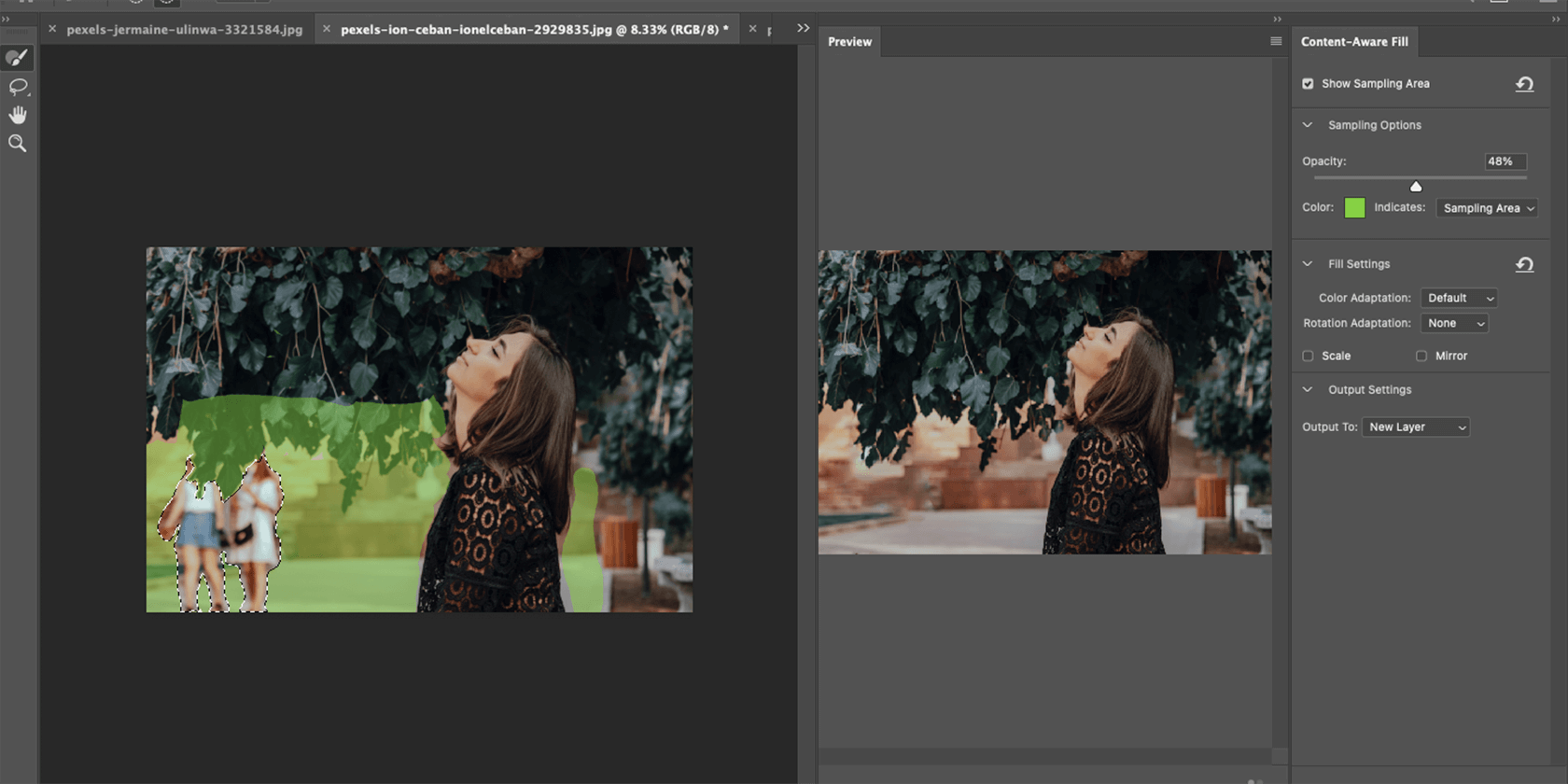
Play with the areas you pick to reach the best outcome. Once you’re done, you can use the Spot Healing Brush to touch up small areas to blend everything even better.
Use the Patch Tool to Delete Objects
Another method to remove an object is with a tool that sits within the Spot Healing Brush menu, called the Patch Tool. This tool lets you find the most similar part of the picture and creates a new fill based on that part.
- Like before, create a new layer to work on.
- Select the Patch Tool from the menu on the left, by pressing down on the Spot Healing Brush.
- Click and drag the cursor around the object you want to remove and try to get as close to it as possible.
- Click on the selection, and drag it to a different part of the picture. Look around until you find the best match, and then release your mouse.
- The tool will not copy that part exactly as-is, but it will create an estimation to best match that sample.
To get the best results, you can use the tool several times, and pick different parts of the object that have different backgrounds.
Use the Clone Stamp Tool in Photoshop to Remove Objects
If there are other parts of the image that look exactly like the background of the object you want to remove, you can use the Clone Stamp Tool. It allows you to sample specific pixels and copy them to another part of the image continually.
- Start with a new layer.
- Pick the Clone Stamp Tool, which is located under the Brush.
- Press Alt, and click on the part of the picture you want to sample.
- Use the [ ] keys to determine the brush size.
- Place your cursor over the object. The clone tool provides a preview to help you align the sampling as best as possible. Once you find the best alignment, start brushing away.
- Stop and sample new parts of the image every time the background doesn’t match anymore.
This method is more involved and can take longer, depending on how accurate you want to be. However, it can generate great results, even with intricate pictures.
Other Easy Ways to Remove Objects From Pictures in Photoshop
Just in case you are new to Photoshop, we want to mention the Crop Tool, which is located on the left menu, under the Magic Wand. It can help you remove unwanted objects from the sides of the picture, by simply cutting them out.
Alternatively, you can choose to focus on just one object in the photo and make the background transparent in Photoshop. Just keep in mind that the previously-discussed methods work much better for more complicated tasks, like removing objects from the middle of a picture.
Making the Most of Photoshop's Tools
When you try to create a completely natural image, it’s best to utilize all of the tools at your disposal. Mixing and matching the methods shown above will ensure that no pixel is out of place.
And after you finish that, you can always start playing around with other tools and effects to find ways to make your picture even better.